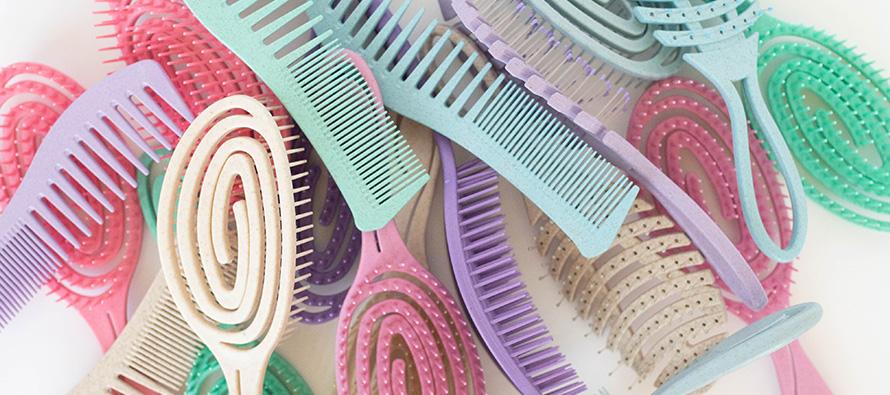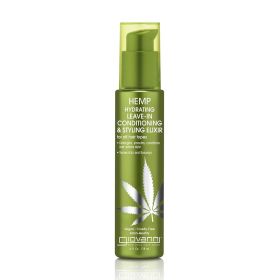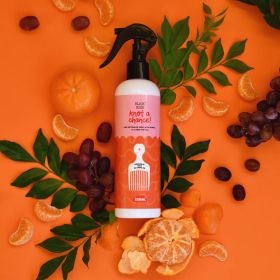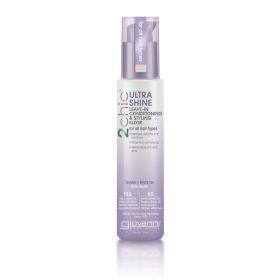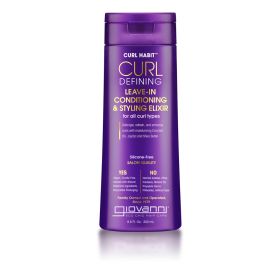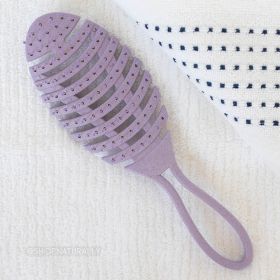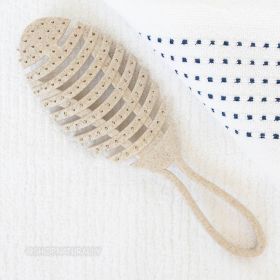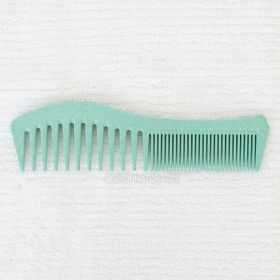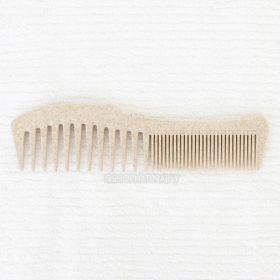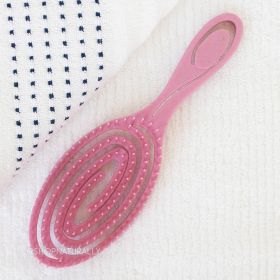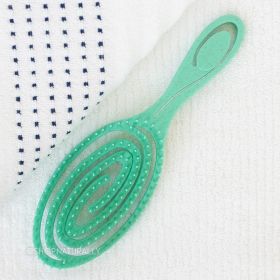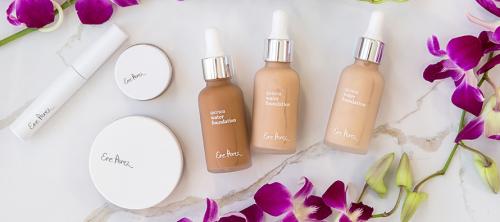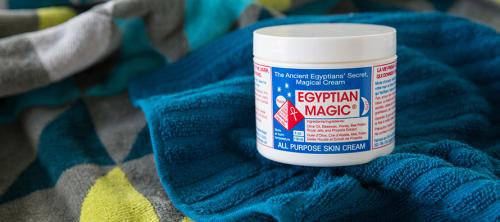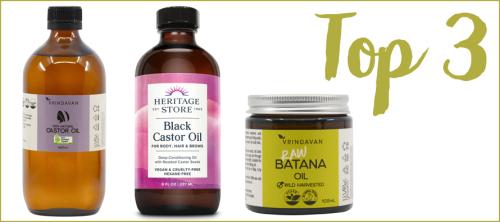Choosing the best detangling hair brush
Why do you need a dedicated detangling hair brush? Long hair, kids hair, wet hair, dried ends, thick hair, curly hair, over styled hair, chemically treated hair, windy day, beach day, the list could go on for another paragraph. There are so many reasons why hair gets knotted and why you need a detangling hair brush.
Why does hair get knots in it?
There are endless reasons why your hair gets knotty. At the basis of all of it, your hair is supposed to shed. If your hair is straight and smooth then it simply falls away with little effort. If you hair is damaged or has a rough texture, then it's likely to wrap about something else and stay put on your head, creating knots.
Likewise, when you dry your hair with a towel or sleep on a cotton pillowcase, rubbing hair shafts together will cause them to stick together if they're a bit rough. If you have used hair spray, it will be a little stiff and harder to brush out and may create some knots on the way.
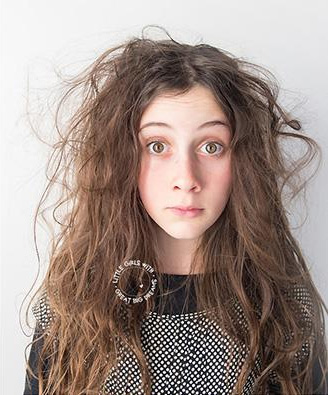
What does a hair detangler spray do to help?
If your hair is really knotted, we highly recommend you reach for a hair detangler spray before you reach for a detangling brush. A detangling spray will soften and smooth the hair shaft before you start brushing and require a lot tell pulling to get the knots out of your hair.
While we have dedicated detangling spray in kids hair care ranges, each leave in conditioner in the Giovanni range works as a detangler and is a multi-tasker. Choose the detangling spray that suits your hair type the best.
- Giovanni Hemp Hydrating Leave-In Conditioning & Styling Elixir
~ for dry hair - Giovanni Ultra Shine Leave-In Conditioner
~ for all hair types and unruly hair - Giovanni Curl Habit Curl Defining Leave-In Conditioner
~ for curly hair - No Nasties SLiCK KiDS Natural Hair Detangler
~ for kids hair
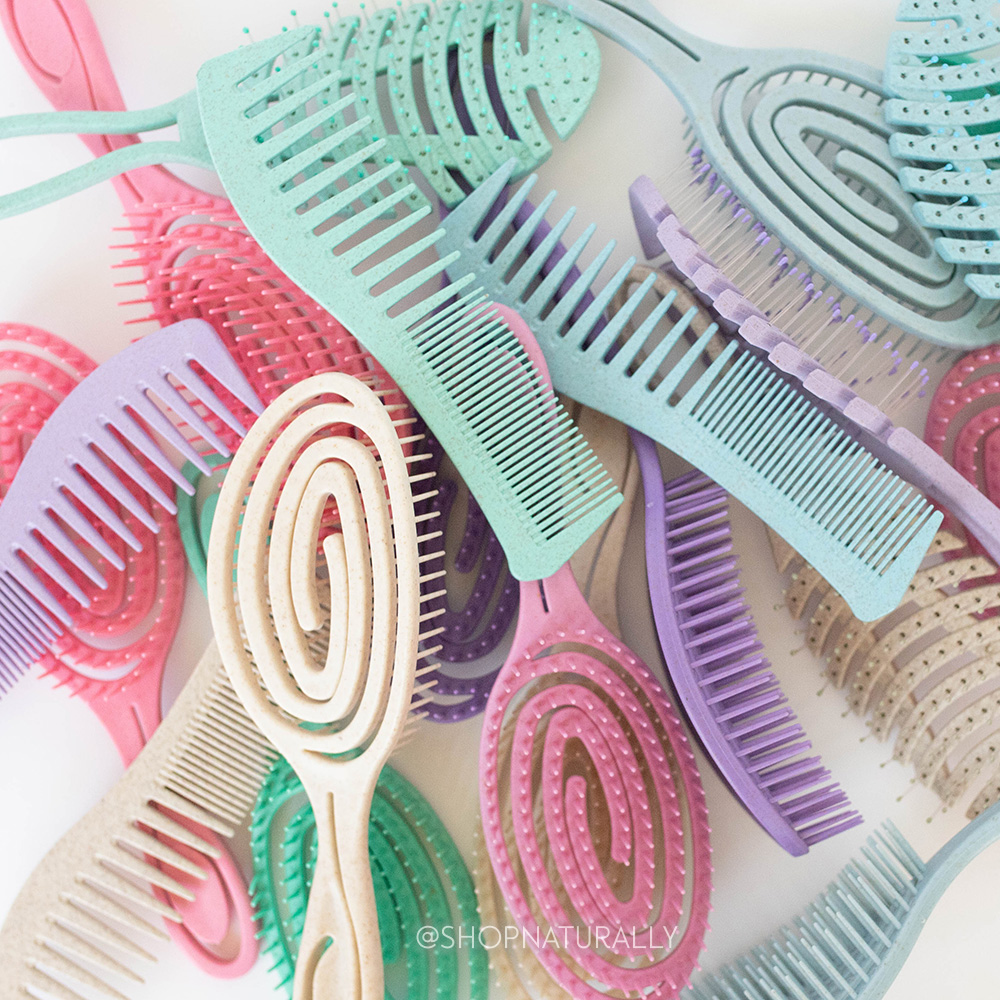
Which detangling hair brush suits my hair the best?
When we chose brushes for our own hair detangling range for The Happy Sparrow, we actually chose two brushes. They are both very different and suit different situations.
Fishbone Style - soft bristles
We recommend this brush for mild tangles and fine to normal hair thickness and mostly on dry hair, but you can use it on wet hair if you don't have any major issues. I am best used in between washes. The bristles are clear nylon and quite flexible with little balls on the end of each bristle to be gentle on the scalp. There is a small amount of flexibility in the head of the brush, but not very much. You can bend these bristles down to completely flatten with the brush head and they'll bounce back.
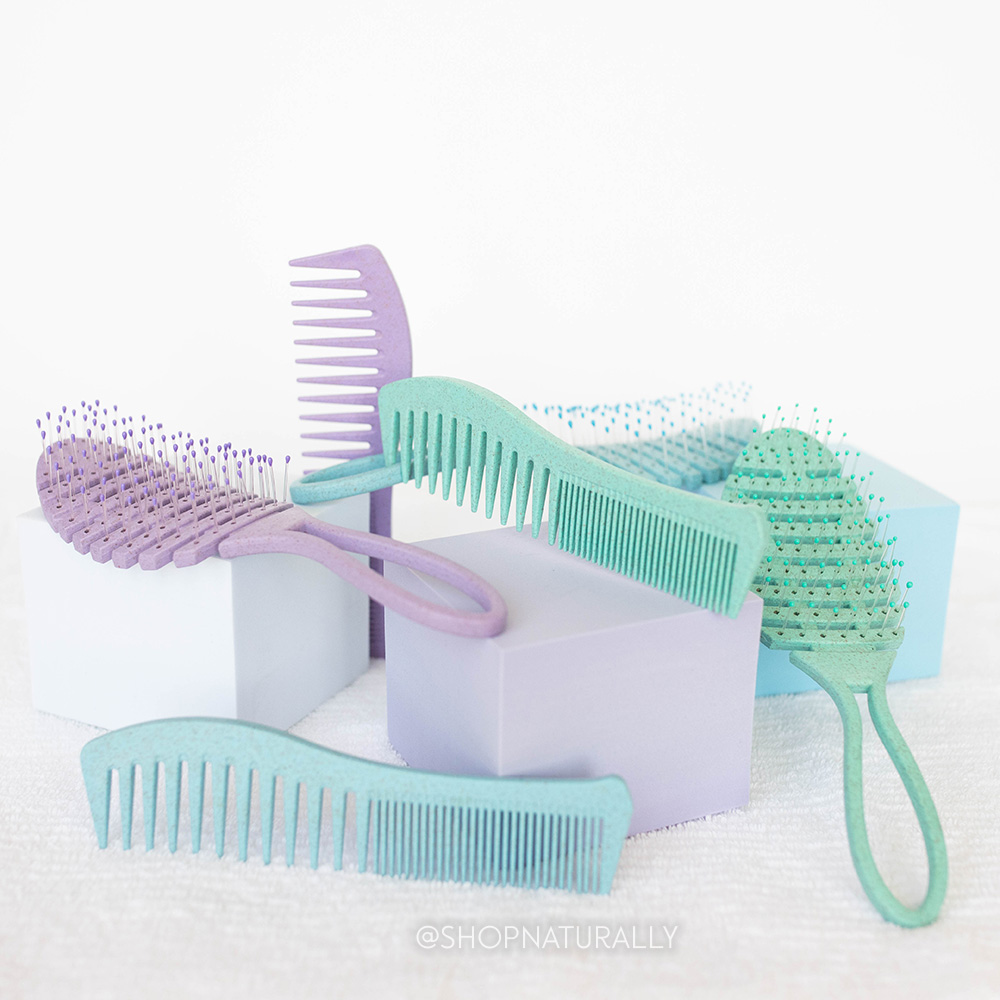
Spiral Style - firm bristles
This brush truly shines when your hair is wet. The bristles are made from the same material as the head and the handle, which is 95% wheat straw. There is some give in the bristles but they are a lot firmer. If you try to bend them too far (with your hands for example), you will find they'll snap off. They are meant to stay upright on the brush with just a small amount of give.
In this brush, the majority of the give comes from the spiral head. You can push the spiral out around 2 to 3cm in the middle for the flexibility you need with stubborn knots in wet hair. The tips of the bristles are pointier and will massage your head to stimulate blood flow on the scalp as you brush. If your scalp is dry, you may see some flaking, so ensure you're doing regular treatments on the hair and scalp to keep the skin well nourished.
This brush is like a hybrid between a brush and a comb. The bristles are firm like a comb and spaced further apart. Since hair is more prone to damage from brushing when it's wet, this brush is the perfect way to gently detangle your hair.
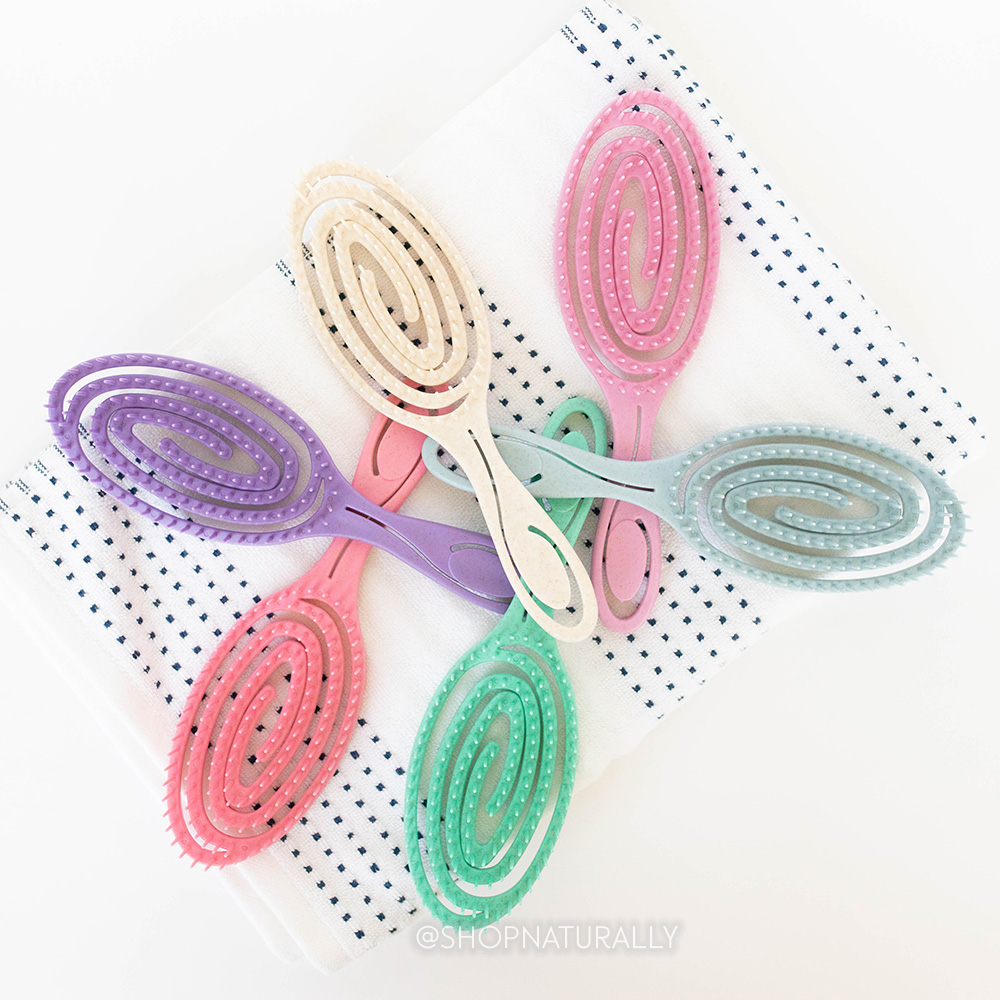
What's the best technique for brushing out knots with a detangling brush?
Starting from the top of the hair shaft and brushing down with a brush is a recipe for disaster. You will just push knots down on top of other knots and create a giant mess.
Finger comb your hair before you start. It will help get major tangles out and help you section your hair. Firstly, use a detangler spray on your hair. Then separate your hair in to small sections, and brush from the bottom. When the knots are clear from that bottom section, move higher up the shaft and brush until the knots are gone. Keep going further up the hair shaft until that entire section is free from knots. Move to the next section and repeat.
How can I prevent getting knots in my hair?
Brush your hair before you wash it.
Don't wash your hair when it's knotted. While it's still dry, brush all of the knots out so you're washing tangle free hair. Our fishbone hair brush is great for that.
Wash the scalp.
When shampooing your hair, concentrate on the scalp, not your hair. Once your scalp has been shampooed, work the lather gently in a downward motion. Don't ever pile your hair on top of your head like you see in old TV commercials.
Don't shampoo too often.
Don't wash your hair daily. You will strip it of all its natural oils, and these oils are helping to keep the hair shaft smooth. If you do wash your hair daily, be prepared for a little bit of an adjustment period. I used to wash my hair daily and over time, I only need to do it once a week, or twice if you've been out and about. You can use a dry shampoo or a boar bristle brush to distribute the natural oils in your hair down the hair shaft in between washes.
Always condition. Always.
Conditioned hair always produces a smoother hair shaft. The smoother the shaft, the less knots. For best results, comb the conditioner through. We have matching wheat straw combs in a find & wide combo. Use the wide side of the comb.
Use a leave-in conditioner on days you don't wash your hair.
Don't rub your hair dry with a towel
Friction from rubbing your hair with a towel is the best way to fill it full of knots. We recommend investing in a thin microfibre towel or hair wrap and gently wrap your hair to get the majority of the moisture out, then allow it to air dry after you have used your spiral detangler brush.
Seal the tips of your hair
You can do this one of two ways, either with a moisturiser, hair oil or a wax.
OR
If you blow dry your hair, especially thick hair, give your hair a blast of cold air at the end.
Say goodbye to your cotton pillowcase
Sleeping on something smoother than cotton will lessen the amount of knots in your hair the following morning. Choose satin or silk or use a hair wrap if you don't find it makes your head hot overnight. Hair wraps are usually better suited to colder climates and winter than they are to summer.
Protect your hair from the wind
On a windy day, braid your hair, put it in a pony tail, tie a scarf around your hair (like you're in a 50's Hollywood movie in a convertible) or put on a hat.
Get your hair cut on a regular basis
Split ends = knots. If you get your hair trimmed around every 8-12 weeks, you'll prevent split ends for being one the reasons your hair gets knotty. Knotty ends is always my warning sign when I'm overdue for a hair cut.
Choose the right products for your hair type
Choose the right hair products for your hair type and consider adding a treatment or a leave-in conditioner to your hair regime.
